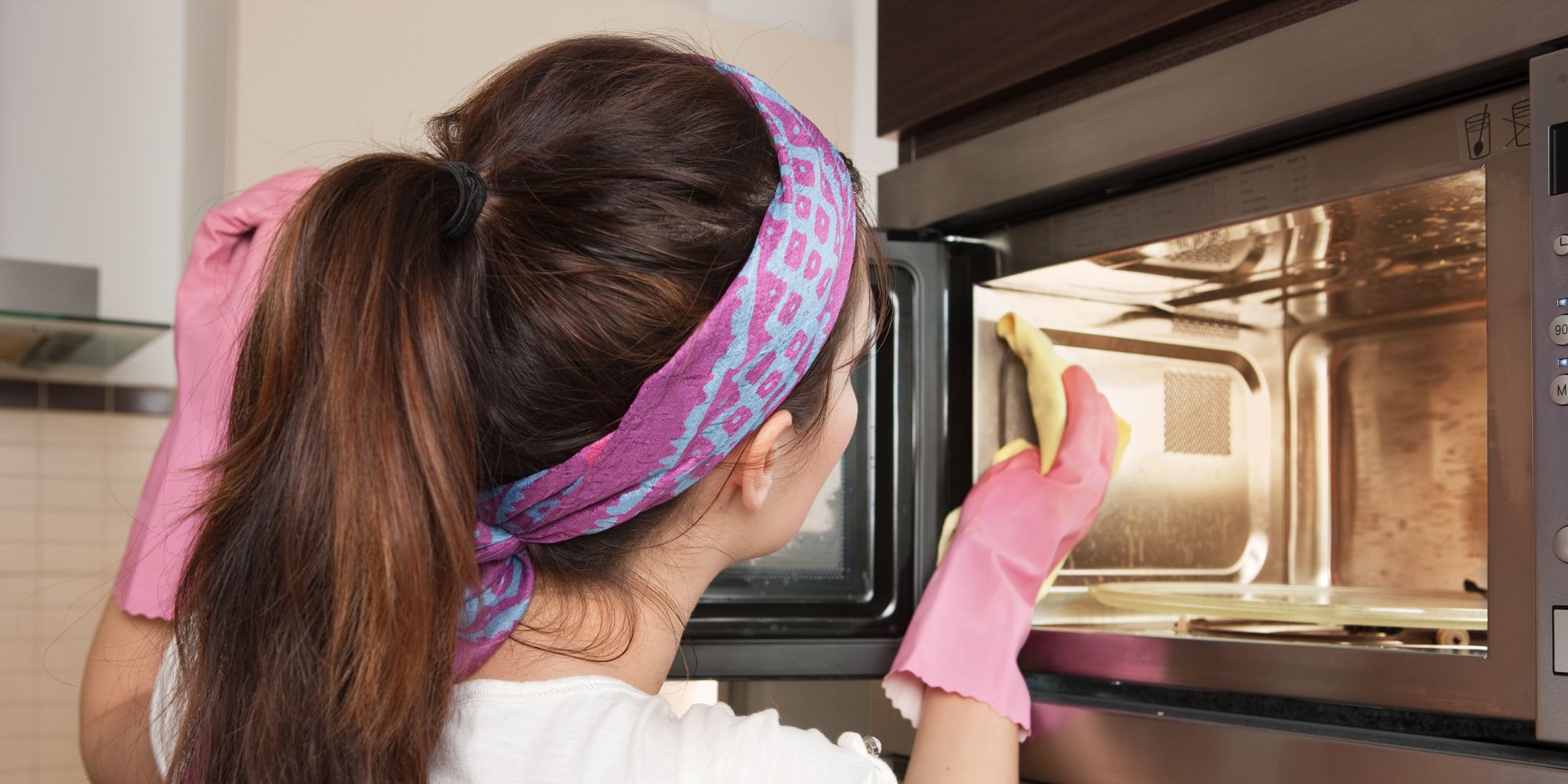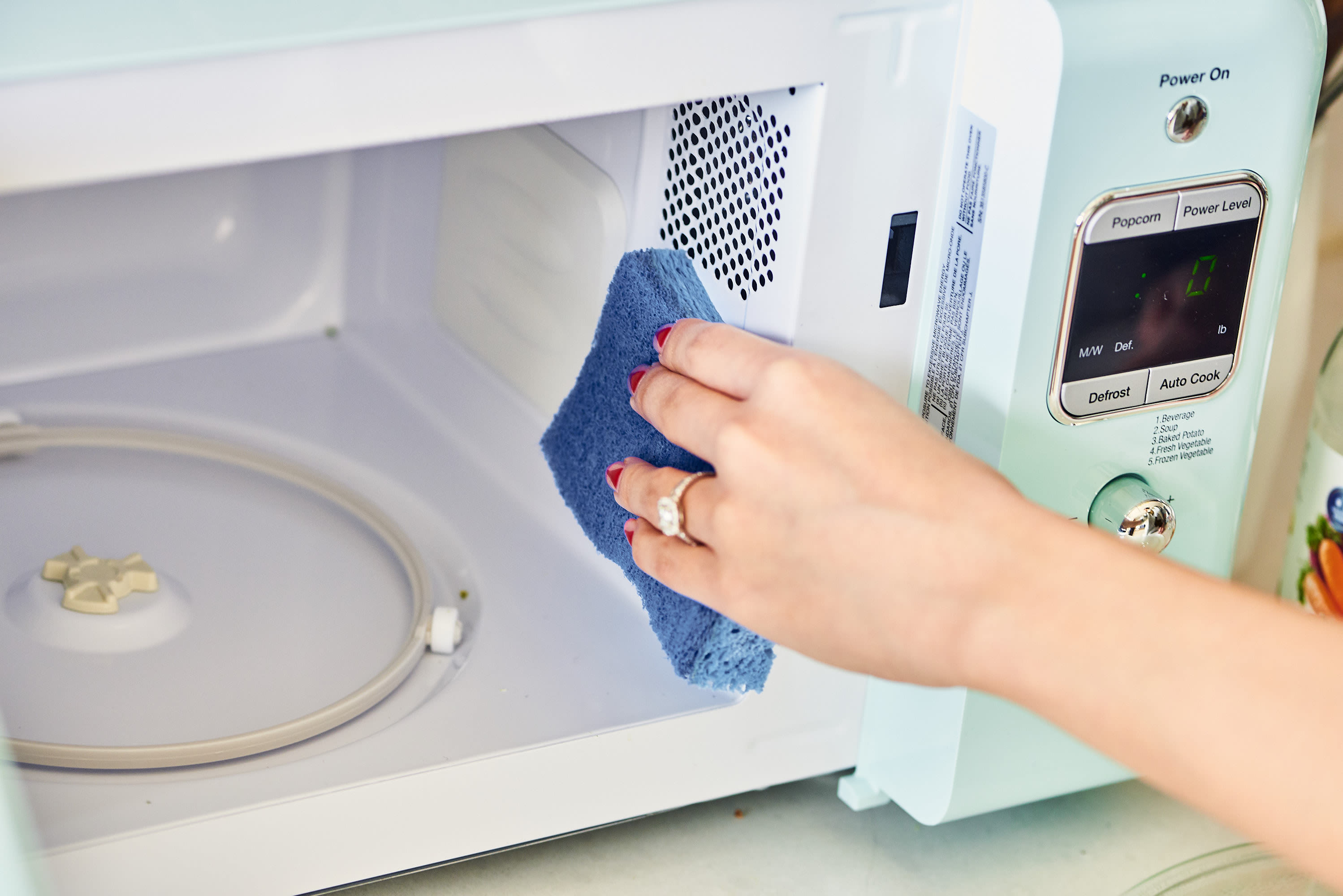Understanding Microwave Cleaning Needs
A microwave is a staple appliance in most kitchens, making it a hub for food preparation and reheating. However, the convenience it offers comes with a downside: messes. Understanding the types of messes, materials used in microwave interiors, and common cleaning challenges is crucial for effective microwave cleaning.
Types of Microwave Messes
Microwave messes vary from simple food splatters to stubborn burnt-on residue. Here’s a breakdown of common types:
- Food splatters:These are usually easy to clean, often caused by liquids or sauces boiling over during heating.
- Spills:These can be more challenging, especially if they involve sticky substances like syrup or melted cheese.
- Burnt-on food:This occurs when food is left in the microwave for too long, resulting in a hardened, charred residue that can be difficult to remove.
- Grease and oil splatters:These can leave a sticky film on the microwave interior, making it challenging to clean.
- Food particles:These can accumulate over time, especially in the corners and crevices of the microwave.
Microwave Interior Materials and Cleaning Requirements
Microwaves are typically made of various materials, each with its own cleaning needs:
- Stainless steel:This is a durable material that is easy to clean with mild detergents and a soft cloth.
- Plastic:Some microwaves have plastic interiors, which are generally safe to clean with mild detergents and a soft cloth.
- Glass:The turntable and rotating plate are often made of glass, which can be cleaned with mild detergents and a soft cloth.
- Metal:Some microwaves have metal parts, such as the door frame or vent, which should be cleaned with a damp cloth.
Identifying Stubborn Stains and Their Causes
Stubborn stains in a microwave can be caused by various factors, including:
- Burnt-on food:This is the most common cause of stubborn stains, often caused by overheated food or food left in the microwave for too long.
- Grease and oil:These can leave a sticky film that is difficult to remove, especially if they have been baked on.
- Spills:Sticky spills, like syrup or melted cheese, can leave behind stubborn stains that require extra effort to clean.
Basic Cleaning Techniques

Regular cleaning is crucial for maintaining a hygienic and functional microwave. Here’s a step-by-step guide using common household cleaning supplies:
Step-by-Step Guide for Cleaning a Microwave
- Unplug the microwave:This is essential for safety and to prevent any electrical hazards.
- Remove the turntable and rotating plate:Wash these separately with warm, soapy water.
- Wipe down the interior:Use a damp cloth with a mild detergent to wipe down the inside of the microwave, paying attention to any food splatters or spills.
- Address stubborn stains:For burnt-on food or greasy residue, you can use a paste made of baking soda and water. Apply the paste to the stained areas, let it sit for a few minutes, then scrub gently with a soft cloth.
- Clean the door and its components:Use a damp cloth to wipe down the inside and outside of the microwave door, including the door seal.
- Rinse and dry:Rinse the interior with a damp cloth and dry it thoroughly with a clean cloth.
- Reassemble the microwave:Replace the turntable and rotating plate, and plug the microwave back in.
Cleaning Tools for a Microwave
Having the right tools can make cleaning your microwave easier and more effective:
- Soft cloth:Use a soft cloth for wiping down the interior and exterior of the microwave.
- Sponge:A sponge can be helpful for scrubbing away stubborn stains.
- Cleaning brush:A cleaning brush can be used to reach tight corners and crevices.
- Paper towels:Paper towels are useful for drying the microwave interior and for cleaning up spills.
Safe and Effective Cleaning Solutions
Using a safe and effective cleaning solution is essential for maintaining the integrity of your microwave. Avoid harsh chemicals or abrasive cleaners, as these can damage the microwave’s interior.
- Mild detergent:A mild dish soap is generally safe for cleaning the microwave interior.
- Baking soda:Baking soda is a natural cleaning agent that can be used to remove stubborn stains.
- Vinegar:Vinegar is another natural cleaning agent that can be used to remove grease and grime.
- Lemon juice:Lemon juice is a natural disinfectant that can be used to clean the microwave interior.
Addressing Specific Cleaning Challenges
Certain areas of the microwave present unique cleaning challenges. Here are some methods for tackling these specific areas:
Removing Burnt-on Food
Burnt-on food can be a real pain to remove, but with a little effort, you can get your microwave sparkling clean again.
- Baking soda paste:Make a paste of baking soda and water and apply it to the burnt-on food. Let it sit for a few minutes, then scrub gently with a soft cloth.
- Vinegar steam:Fill a microwave-safe bowl with equal parts water and vinegar. Microwave on high for 5 minutes. The steam will help loosen the burnt-on food, making it easier to wipe away.
- Commercial microwave cleaner:If the above methods don’t work, you can try a commercial microwave cleaner. Follow the instructions on the product label carefully.
Cleaning the Microwave Turntable and Rotating Plate
The turntable and rotating plate are often the dirtiest parts of the microwave. Here’s how to clean them:
- Remove the turntable and rotating plate:Wash them separately with warm, soapy water.
- Scrub stubborn stains:If there are stubborn stains, use a soft sponge or brush to scrub them away.
- Rinse and dry:Rinse the turntable and rotating plate with clean water and dry them thoroughly before putting them back in the microwave.
Cleaning the Microwave Door and Its Components
The microwave door can also accumulate dirt and grime. Here’s how to clean it:
- Wipe down the door:Use a damp cloth with a mild detergent to wipe down the inside and outside of the microwave door.
- Clean the door seal:The door seal can trap food particles and grime. Use a damp cloth to wipe it clean.
- Clean the vent:The vent on the microwave door can also get clogged with dirt and grease. Use a cleaning brush or a vacuum cleaner with a crevice attachment to clean it.
Maintaining a Clean Microwave
Prevention is key to maintaining a clean microwave. Here are some tips for preventing messes and keeping your microwave sparkling clean:
Preventing Food Splatters and Spills
- Cover food:Cover food with a microwave-safe lid or plastic wrap to prevent splatters.
- Use a microwave-safe dish:Choose a microwave-safe dish that is deep enough to prevent food from boiling over.
- Stir food regularly:Stir food regularly to prevent it from overheating and burning.
- Clean up spills immediately:Wipe up spills immediately to prevent them from hardening and becoming difficult to remove.
Importance of Regular Cleaning

Regular cleaning is essential for maintaining a hygienic and functional microwave. Here’s why:
- Prevents the spread of bacteria:Food splatters and spills can harbor bacteria, which can be harmful if they are not cleaned properly.
- Maintains microwave functionality:A dirty microwave can affect its performance, making it less efficient and even causing it to malfunction.
- Extends the lifespan of the microwave:Regular cleaning can help to extend the lifespan of your microwave by preventing damage from dirt and grime.
Cleaning Schedule for a Microwave
The frequency of cleaning your microwave depends on how often you use it. Here’s a suggested cleaning schedule:
- Daily:Wipe down the interior of the microwave after each use to prevent food splatters and spills from hardening.
- Weekly:Give the microwave a thorough cleaning, including the turntable, rotating plate, and door.
- Monthly:Deep clean the microwave, including the vent and door seal.
Alternative Cleaning Solutions
Natural cleaning solutions can be just as effective as commercial cleaners for cleaning your microwave. Here are some alternatives:
Natural Cleaning Solutions for a Microwave
- Baking soda:Baking soda is a natural abrasive that can be used to remove stubborn stains.
- Vinegar:Vinegar is a natural disinfectant that can be used to clean and deodorize the microwave.
- Lemon juice:Lemon juice is a natural disinfectant and deodorizer that can also help to brighten the microwave interior.
Using Baking Soda and Vinegar to Clean a Microwave
Here’s how to use baking soda and vinegar to clean your microwave:
- Make a baking soda paste:Mix baking soda with water to create a thick paste.
- Apply the paste:Apply the paste to the stained areas of the microwave interior.
- Let it sit:Let the paste sit for a few minutes to allow it to loosen the dirt and grime.
- Scrub with a soft cloth:Use a soft cloth to scrub the paste into the stained areas.
- Wipe clean:Wipe away the paste with a damp cloth.
- Steam clean with vinegar:Fill a microwave-safe bowl with equal parts water and vinegar. Microwave on high for 5 minutes. The steam will help to loosen any remaining dirt and grime.
- Wipe clean:Wipe down the interior of the microwave with a damp cloth.
Effectiveness of Steam Cleaning for Microwave Interiors
Steam cleaning is an effective way to clean the interior of a microwave. The steam helps to loosen dirt and grime, making it easier to wipe away. It’s also a natural and non-toxic method of cleaning.
